How to EXCEL at Dogfighting in the DCS F-14 Tomcat!
Tips From a REAL Fighter Pilot!
The DCS F-14 Tomcat is a great module and very popular in the community. Watching people fly is shows it’s a real challenge so taking some tips from a real F-14 Tomcat pilot seems a fantastic idea! I recently watch a video on Tom “Mooch” Carrols YouTube channel where he had “Nasty” who was a real-world F-14 fighter pilot explaining how to fly and fight in the DCS F-14 Tomcat (A/B). I thought it noteworthy to include his incredible insights at the bottom of this post and share with all you DCS dogfighter pilots.
F-14 Tomcat: Design History Service and Combat Record.

The DCS F-14 Tomcat was a supersonic, twin-engine, two-seat, variable-sweep wing fighter aircraft designed by Grumman Aerospace Corporation in the late 1960s. The Tomcat was introduced to the United States Navy in 1972 and was in service until its retirement in 2006. The Tomcat was designed with a variable-sweep wing, which allowed it to fly at both subsonic and supersonic speeds, and made it capable of intercepting high-flying, high-speed targets. The aircraft was also equipped with a powerful radar system, advanced avionics, and a sophisticated weapons system that included long-range missiles.
During its time in service, the Tomcat played a significant role in several major conflicts. In 1981, two F-14s shot down two Libyan Su-22s during a confrontation over the Gulf of Sidra. The Tomcat also saw action during the Gulf War in 1991, where it was primarily used for air superiority missions and provided critical support to coalition ground forces.
The most famous combat engagement involving the Tomcat occurred during the 1980s, in a series of dogfights between US Navy F-14s and Iranian F-4 Phantom IIs. These engagements, known as the “F-14 versus F-4 Phantom II engagements,” saw the Tomcat emerge as the dominant fighter, with a kill ratio of around 6:1. In addition to its combat capabilities, the Tomcat was also used extensively for reconnaissance and aerial refuelling missions. It was also notable for its role in the movie Top Gun, which helped to popularize the aircraft and its capabilities.
Overall, the F-14 Tomcat was a remarkable aircraft that played a crucial role in shaping the US Navy’s air power capabilities. Its advanced technology, exceptional performance, and combat prowess make it one of the most iconic fighter aircraft in history.
Dogfighting Terminology.
There are some very important dogfighting terms you need to grasp to get BFM/Dogfighting down par.
- Corner Speed.
- One Circle Radius Fight.
- Two Circle Rate Fight.
- RADIUS vs RATE Fight.
- Energy Management.
- Bandit Type: Class 1- 2-3
Corner Speed! What is it?

A jet fighter’s corner speed is the highest speed at which the aircraft can make a turn without losing altitude. At this speed, the lift generated by the wings is equal to the weight of the aircraft, allowing the pilot to maintain a steady altitude during a turn.
The F-14A/B Tomcat is a supersonic, twin-engine, variable-sweep wing fighter aircraft. It was designed in the 1960s by Grumman Aerospace Corporation for the United States Navy. The F-14A/B had a maximum speed of Mach 2.34 (1,544 mph or 2,485 km/h) at altitude and a service ceiling of 50,000 feet (15,000 m).
The corner speed of the F-14A/B was around 450 knots (518 mph or 833 km/h) at a typical weight and configuration. At this speed, the F-14A/B could execute a maximum sustained turn rate of approximately 14 degrees per second, allowing the aircraft to maintain a tight turn radius while avoiding losing altitude.
The F-14A/B’s corner speed was influenced by its wings’ variable sweep design, allowing the pilot to adjust the wings’ angle to optimize lift and drag depending on the aircraft’s speed and manoeuvrability requirements. The F-14A/B’s wings could sweep back to 20 degrees for high-speed flight and sweep forward to 68 degrees for slow-speed flight and carrier landings.
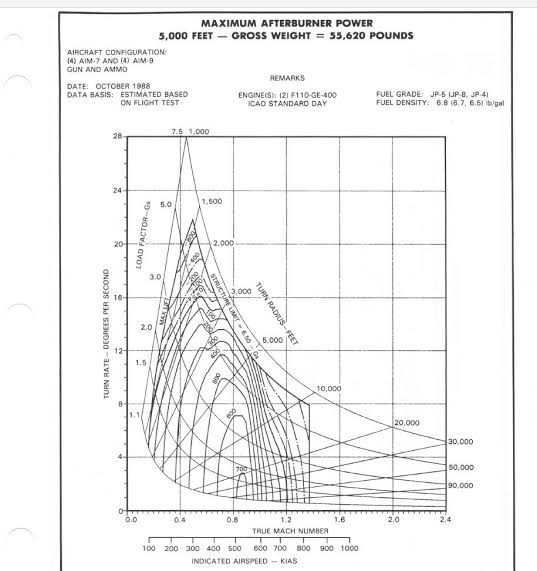
The F-14A/B was also equipped with a sophisticated fly-by-wire control system that allowed the aircraft to perform precise manoeuvres at high speeds. This system used electronic sensors and computers to interpret the pilot’s control inputs and adjust the aircraft’s control surfaces to achieve the desired manoeuvre.
In conclusion, the corner speed of a jet fighter like the F-14A/B is a critical parameter that determines the aircraft’s maximum turn rate and manoeuvrability while maintaining altitude. The DCS F-14 Tomcat A/B’s corner speed was influenced by its variable sweep wing design and fly-by-wire control system, making it a highly manoeuvrable aircraft in air combat situations.
One Circle Radius Fight. Know Your Strengths in the DCS F-14 Tomcat!

In the world of aviation, understanding your aircraft’s performance capabilities is essential for safe and efficient flight operations. One important concept in this regard is the “One Circle Radius Fight” (OCRF), which refers to the maximum sustained turn rate an aircraft can maintain at a given altitude and airspeed.
At its core, OCRF is a manoeuvring capability that allows an aircraft to maintain a constant radius turn while avoiding the loss of energy or altitude. Essentially, it measures how well an aircraft can turn and climb simultaneously. This is especially critical during combat situations where a pilot may need to execute evasive manoeuvres or engage in dogfighting.
Knowing the OCRF for your aircraft is important for several reasons. Firstly, it can help you make informed decisions during combat engagements. By understanding your aircraft’s capabilities, you can better plan your approach, anticipate the movements of your opponent, and maximize your chances of success.
Secondly, OCRF is an important consideration when designing and testing new aircraft. Engineers need to know the maximum turn rate an aircraft can sustain to ensure that it can meet performance expectations and operate safely in a variety of conditions.
Lastly, OCRF can be used to evaluate the overall effectiveness of an aircraft. By comparing the OCRF of different models, manufacturers can determine which aircraft perform best and make improvements where necessary.
In conclusion, understanding the OCRF of your aircraft is a critical component of safe and effective aviation. Whether you are a pilot, engineer, or manufacturer, knowing the maximum sustained turn rate of an aircraft can help you make informed decisions, design better aircraft, and improve overall performance.
Two Circle Fight! What is it in the DCS F-14 Tomcat?

A two-circle fight, also known as a horizontal or rolling scissors, is a classic dogfighting tactic used by jet pilots to gain a positional advantage over their opponents. It involves two jets flying in a tight turning battle, with each pilot attempting to outmanoeuvre the other in a circular path.
To initiate a two-circle fight, a pilot will typically begin by pulling their jet into a high-g turn, with the goal of forcing their opponent to match their altitude and turn rate. Once both jets are in the turn, the pilots will attempt to stay in a tight turning circle while constantly adjusting their bank angle, airspeed, and throttle to try and gain an advantage.
The key to success in a two-circle fight is to maintain energy and avoid stalling. This means that pilots need to be constantly aware of their airspeed, altitude, and angle of attack to prevent their jet from losing energy and falling out of the turn. The ability to rapidly change direction and maintain energy is critical in order to gain an advantage over the opponent.
Not all jets are created equal when it comes to two circle fights. Typically, jets with a high thrust-to-weight ratio and good energy retention characteristics are favoured in this type of dogfighting. For example, the F-22 Raptor, with its powerful engines and advanced fly-by-wire system, is an excellent platform for a two-circle fight. The F-16 Fighting Falcon, with its agile handling and ability to rapidly change direction, is also well-suited for this type of dogfighting.
In conclusion, the two-circle fight is a classic dogfighting tactic used by jet pilots to gain a positional advantage over their opponents. It requires skill, strategy, and a thorough understanding of the aircraft’s performance characteristics. Pilots who are able to successfully execute this manoeuvre will be better equipped to prevail in air-to-air combat scenarios.
What’s the Difference between One and Two Circle Engagements.
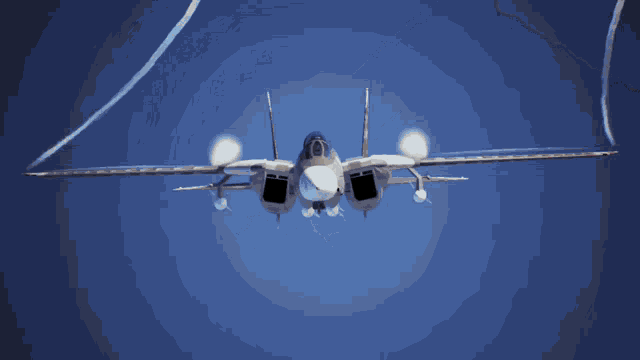
When it comes to aerial combat, there are various types of engagements that fighter jets can find themselves in. Two of the most common are radius fights and state fights, which differ in their objectives and tactics.
A radius fight, also known as a turning fight, is a type of aerial engagement in which two or more fighter jets engage in a dogfight while attempting to outmanoeuvre each other. The objective of a radius fight is to gain an advantage in terms of positioning and angle of attack, with the goal of firing a missile or gun at the enemy aircraft. In a radius fight, the speed of the aircraft is less important than their ability to turn and change direction quickly.
On the other hand, a state fight, also known as a beyond-visual-range (BVR) engagement, is an aerial engagement in which fighter jets attempt to shoot down each other from a distance using radar and long-range missiles. The objective of a state fight is to destroy the enemy aircraft before it can get within range to engage in a radius fight. In a state fight, speed and altitude are critical factors as they can provide an advantage in terms of detecting and engaging enemy aircraft.
The tactics and equipment used in radius fights and state fights also differ significantly. In a radius fight, fighter pilots rely on their aircraft’s manoeuvrability and visibility to gain an advantage over their opponent. They may perform tight turns, quick reversals, and other manoeuvres to try and get behind the enemy aircraft. In contrast, state fights require fighter pilots to rely on advanced radar systems and long-range missiles to detect and engage enemy aircraft from a distance.
In terms of equipment, fighter jets used in radius fights are typically equipped with guns, short-range missiles, and highly manoeuvrable airframes. On the other hand, fighter jets used in state fights are equipped with advanced radar systems, long-range missiles, and powerful engines capable of flying at high speeds and altitudes.
In conclusion, radius fights and state fights are two different types of aerial engagements that require different tactics and equipment. While radius fights focus on close-range dogfighting and manoeuvrability, state fights prioritize long-range engagement and advanced technology. Fighter pilots need to be trained and equipped for both types of engagements to be effective in modern air combat.
What is Energy Management in Jet Fighters.

Energy management is a critical aspect of air combat, particularly in jet fighters where speed, manoeuvrability, and altitude are key factors. In essence, energy management involves the strategic use of an aircraft’s kinetic and potential energy to gain a tactical advantage over an adversary.
To understand energy management in jet fighters, it is necessary to appreciate the principles of energy conservation, which dictate that energy cannot be created or destroyed but can only be transferred between different forms. In the context of air combat, the energy of a fighter aircraft can be stored in the form of potential energy (altitude) or kinetic energy (speed).
The basic strategy of energy management is to gain altitude when excess speed is available and to convert altitude to speed when necessary. The goal is to maintain the highest possible energy state throughout the fight. For example, a fighter pilot might climb at maximum power to gain altitude, then dive to gain speed and momentum, and finally climb again to convert speed into altitude.
Effective energy management requires a thorough understanding of the performance characteristics of the aircraft, including its thrust-to-weight ratio, maximum altitude, and maximum speed. It also requires situational awareness, as the pilot must be able to assess the energy state of the aircraft relative to that of the adversary and make decisions accordingly.
Overall, energy management is a critical skill for fighter pilots, as it can mean the difference between success and failure in air combat. By effectively managing the energy state of their aircraft, pilots can gain a tactical advantage over their adversaries, avoid being trapped in a low-energy state, and ultimately achieve air superiority.
Bandit Classes.
Knowing both your aircraft strengths and weakness goes a long way towards winning your next engagement. The importance of knowing your adversary’s type and strengths is also paramount. Breaking these down into three basic classes will help you quickly adapt your fight to help you win the battle at hand when you merge with a fighter. There are three basic classes of bandit classes. These are very simply divided by how an aircraft has been designed and its primary task.
TYPE 1 Bandit is an aircraft that has an excellent ability to turn such as the Mig-15, Mig-17 as well as the A-4 Skyhawk. These aircraft have excellent turning abilities and likely favour the ONE CIRCLE fight.

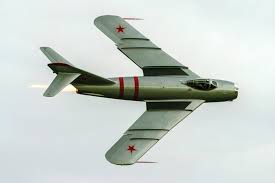
TYPE 2 are the sleek fast aircraft like the Mig-23, Mig-25, F104 to name some very fast but limited turning ability aircraft. Interceptor designs needing thin wings and fly super-fast to kill incoming fighters or bombers.

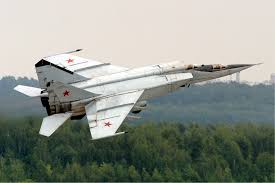
TYPE 3 Are often more modern aircraft like the Mig-29, F-15 and F-16 to name a few. Powerful engines and wings designed to dogfight these can fly fast as well as turn well in a dogfight.

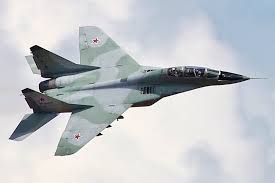
DCS F-14 Tomcat – Dogfighting Secrets.
So let’s get to the nitty gritty part of this post so you can fly your DCS F14 Tomcat to its limit. The important factors and techniques mentioned here will take your F 14 flying to the next level and have been tested by “Nasty” in DCS World.
- The F-14 is a big powerful aircraft, and its swing-wing configuration will automatically optimize the aircraft for combat. Nasty recommends leaving the wing sweep controls alone and concentrate flying the aircraft.
- The Tomcat is generally best as a Two Circle Fighter so it’s going to chase you around the circle horizontally or even vertically to get on your tail.
- The DCS F14 Tomcat needs to be flown at 325 knots at 6.5G to attain the 22 degrees per second turn rate. This the same as far as I know as the F-16 so don’t be scared of Vipers you Cat people.
- The ideal FLIGHT PROFILE is to have the jet 7 Degrees nose down below the horizon as you pull the 6.5Gs permitted all the while holding full afterburner (Zone 5) and maintaining your corner speed of 325 knots!
Practice Makes Perfect!
The F-14 is an older aircraft but along with the F-16 Viper it ranks as one of the top modules. Its age means it’s not got a great HUD with all the bells and whistles but its going to do the job for you. It does have what you need to get the job done with the velocity vector placed at 7 degrees nose low for optimum turn performance. You can glance our instruments intermittently if you need to but if you’re flying well, you’ll know, and the HUD will guide you!
The Tomcat has a number of instruments you can reference. The airspeed indicator has a thick line extending from its 4 o’clock position. This is a quick reference for your corner speed. Your speed indicator needle needs to be very close to this at all times in a dogfight. This indicates 325 knots airspeed, and you need to be here to win!

The next reference is in your primary attitude display in the centre of your Instrument panel. The DOT that indicates your nose position should be pointing just below the 5 degree below the horizon line in a tight bank!
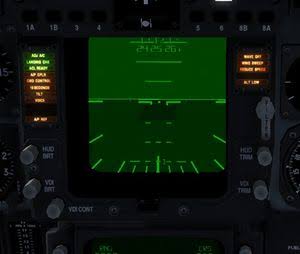
The buffet which is where the aircraft is about to stall is near where you want to be. In the DCS F-14 Tomcat it shakes, and you can possibly hear a difference in the air over the canopy if you’re on the limit. If it was a real-world aircraft, you would be feeling all of this as well as the 6.5Gs and this buffet through the ejection seat and your butt.
Keeping Control of the Tomcat! Practice!
This whole flight regime will require you to fly both RH and LH turns getting a feel for your chosen jet. The juggling of the right speed with the nose down attitude and Gs will take time. You can manage speed increasing by rolling the wings and reducing your bank and nose down attitude. Keeping the aircraft on the buffet is another challenge so you can see why you need to fly this without enemy distractions initially. Practice till it feels natural. When you can be the master of the Tomcat and not its slave. Good luck and I hope this enlightening guide from NASTY helps you.
You can support NASTY by purchasing his book here. It’s not an affiliate link.
The Tom Mooche Ward YouTube channel is here.
DCS F-14 Tomcat FAQ.

The F-14 Tomcat is a supersonic, twin-engine, variable-sweep wing fighter aircraft that was used by the United States Navy from the 1970s until its retirement in 2006. It is a legendary aircraft that has captured the imagination of aviation enthusiasts and the general public alike. Here are 10 frequently asked questions about the F-14 Tomcat, along with their answers.
- What is the F-14 Tomcat’s top speed? The F-14 Tomcat has a top speed of Mach 2.34 (1,544 mph) at altitude.
- What is the F-14 Tomcat’s range? The F-14 Tomcat has a range of approximately 1,600 nautical miles (1,840 miles) with external fuel tanks.
- What is the F-14 Tomcat’s maximum altitude? The F-14 Tomcat can fly at a maximum altitude of 56,000 feet.
- What weapons can the F-14 Tomcat carry? The F-14 Tomcat can carry a variety of air-to-air missiles, including the AIM-54 Phoenix, AIM-7 Sparrow, and AIM-9 Sidewinder. It can also carry air-to-ground missiles and bombs, such as the AGM-65 Maverick and GBU-10 Paveway II.
- What is the F-14 Tomcat’s length? The F-14 Tomcat is 62 feet 8 inches long.
- What is the F-14 Tomcat’s wingspan? The F-14 Tomcat has a wingspan that can vary from 20 feet to 68 feet, depending on the position of the wings.
- How many F-14 Tomcats were built? A total of 712 F-14 Tomcats were built between 1970 and 1992.
- What was the F-14 Tomcat’s role in the US Navy? The F-14 Tomcat was primarily used as a fleet defense fighter, tasked with defending carrier battle groups from enemy aircraft.
- When was the F-14 Tomcat retired from service? The F-14 Tomcat was retired from service by the US Navy in 2006.
- What is the legacy of the F-14 Tomcat? The F-14 Tomcat is remembered as one of the most iconic and capable fighter aircraft ever built. It played a vital role in the US Navy’s operations during the Cold War and beyond, and its unique variable-sweep wing design inspired future aircraft designs. The F-14 Tomcat will always hold a special place in the hearts of aviation enthusiasts and the general public alike.
In conclusion, the F-14 Tomcat was a remarkable aircraft that captured the imagination of people around the world. Its speed, range, and versatility made it an effective tool for the US Navy, and its unique design and capabilities inspired future generations of aircraft designers. Although the F-14 Tomcat has been retired from service, its legacy lives on, and it will always be remembered as one of the most iconic and capable fighter aircraft ever built.
Conclusion:
I hope this insight into the iconic DCS F-14 Tomcat with both FAQs as well as the real-world pilot guide from “NASTY” on how to fly the jet to its limit helps you in your upcoming F-14 dogfights in DCS World.
Author.
Brendon McAliece is a multi-lingual expat who brings over three decades of flight simulator/PC building experience as well as over two decades of real-world jet fighter experience as a weapons/egress technician. He holds a sport pilot certificate giving him real-world flying experience. Hi travels have taken him from Europe to the Middle East, Asia and his home of Australia. He has a passion for travel, languages, Flight simulation as well as Guitaring and Coffee. You can read more in his blogs below.

Learn more @
DreamingGuitar.com – DreamingCoffee.com – LetsFlyVFR.com
Home – Blog – Shop – About
As an Amazon affiliate I may earn on qualifying sales.

